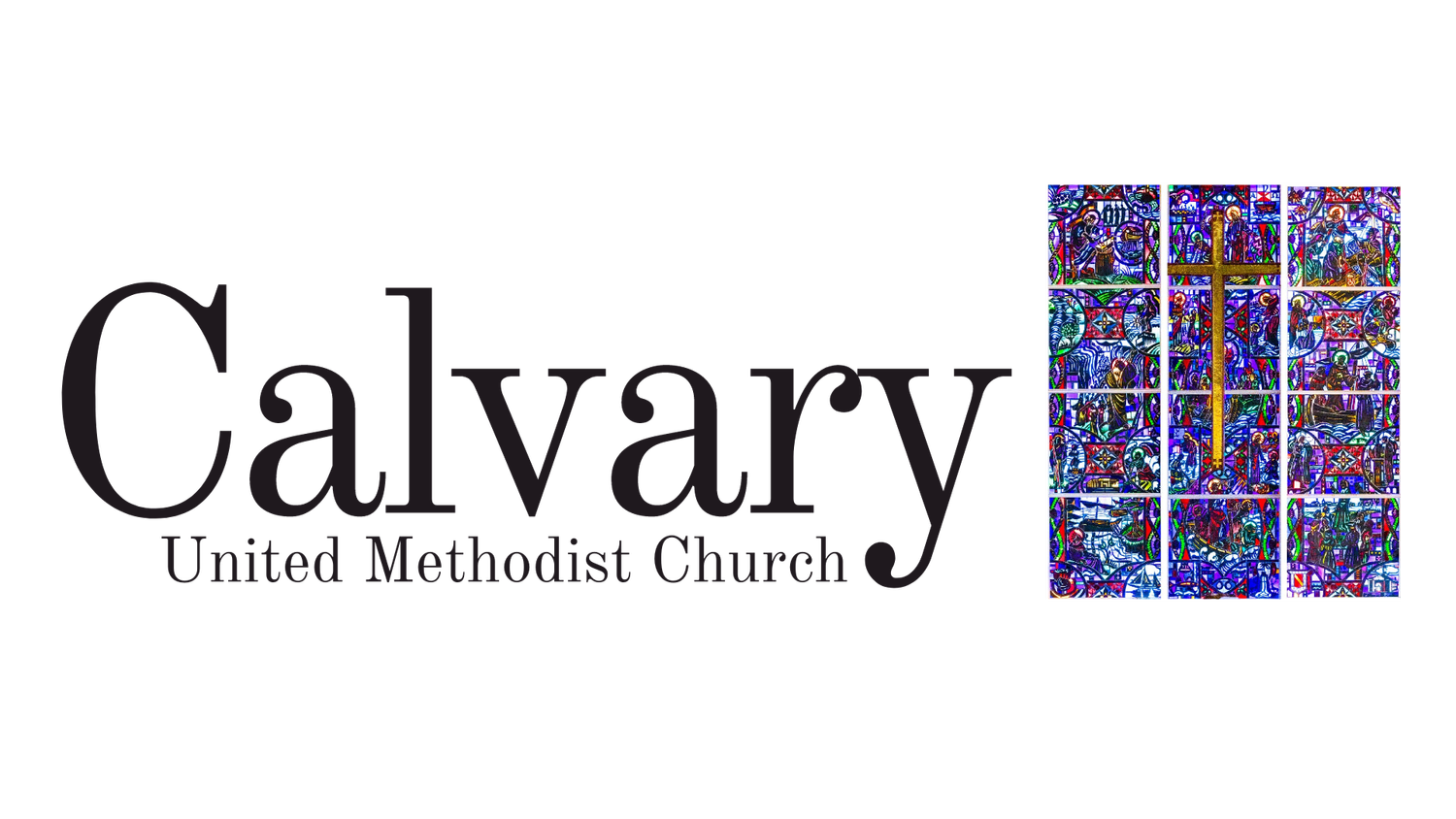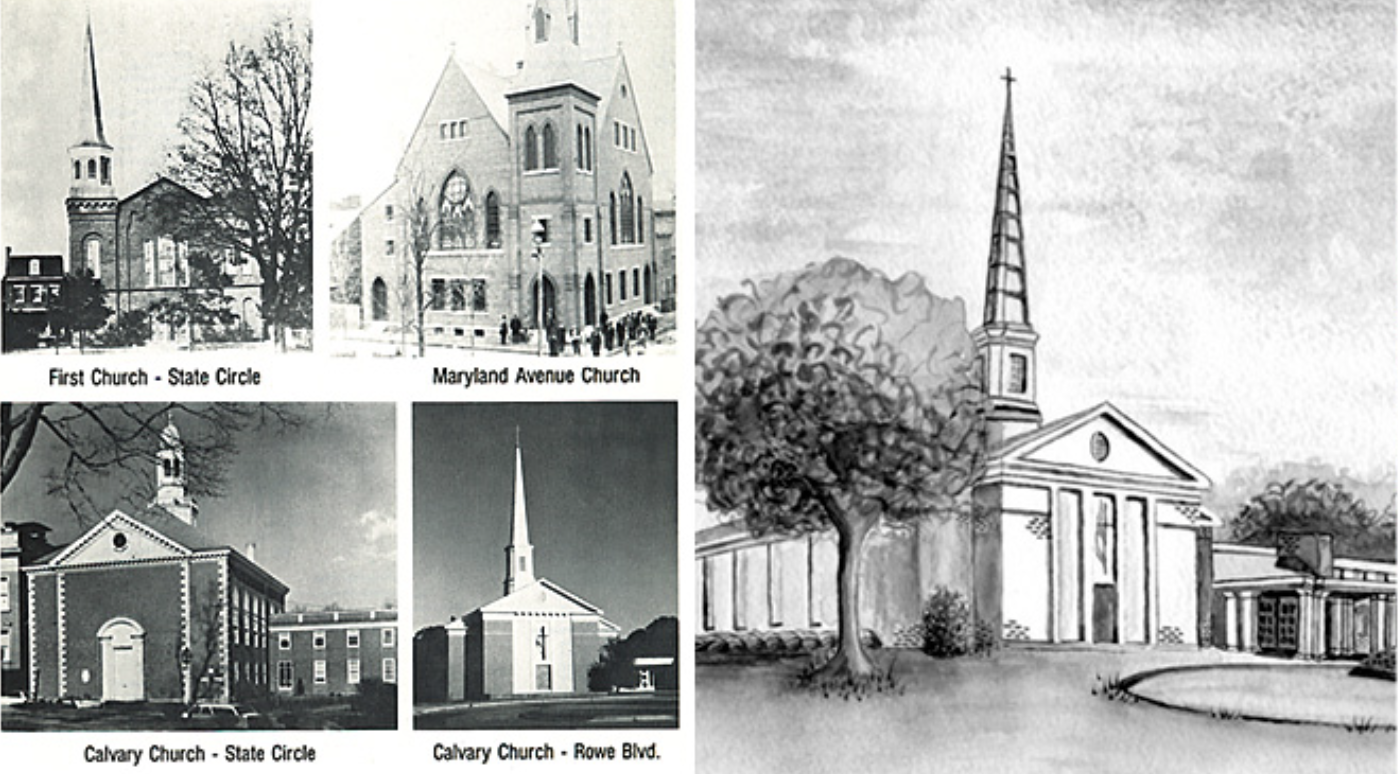
Our History
This brief synopsis of Calvary's history was taken from the church history prepared by Isabel Cunningham and was originally posted in the 1985-86 church directory.
The list of "Historic Personages" is taken from the materials prepared for Calvary's Anniversary Celebration in 2006.The story of Calvary and its predecessors begins in 1777 when Francis Asbury assigned himself to Annapolis. He had visited the town in 1773 and another of John Wesley's "missionaries," Joseph Pilmore, had preached here in 1772. Both had been discouraged by "the spirit and the practice of the people" in this worldly place. In 1777 Asbury repeatedly tried to convey his message to people who "were not disposed to give their hearts to God." After six months of fruitless efforts, he nearly despaired; then "a small class of females" began to meet at the home of Charlotte Small. This class grew until it included black and white members, male and female.
When the Revolutionary War ended, John Chalmers offered the Methodist Society a building site within the present grounds of the Naval Academy. Charlotte Small went from door to door soliciting funds and "pled the cause of the Redeemer" so successfully that the Methodist Society was able to build a small frame meeting house. On the second Sunday in November, 1785, Francis Asbury preached there. This is the occasion Calvary celebrates on Anniversary Sunday. The state legislature passed a resolution in 1789 enabling the Methodists to move their meeting house to a location within State Circle near the end of Maryland Avenue. While they worshipped in the "Old Blue Church," the congregation increased to 195 white and 244 black members. In 1818 they bought a lot on State Circle at North Street and built a "neat brick church." There they worshipped in three successive buildings for 155 years.The Methodists in Annapolis recorded a series of remarkable accomplishments between 1820 and 1840. As early as 1821, they formed one of the first two missionary societies in the Baltimore Conference. By 1827 they had organized a Sabbath School that met regularly; in 1835 they established a black Sunday School as well. Local Methodists had begun to free their slaves in the 1790s. In 1830 those members who still "held fellow creatures in bondage" promised to free them.
The next year, the women of the church formed a Female Missionary Society, one of the earliest in America. In 1838 the black members of the church built a separate meeting house which became Asbury Church. In 1859 the Methodists on State Circle erected an impressive church with a large sanctuary, an organ and choir loft, and a bell tower. When the congregation decided to rent pews, those who preferred a simple form of worship in a plain building seceded in 1863 and formed Wesley Chapel on Maryland Avenue. For the next 58 years, two Methodist congregations worshipped a few blocks apart. In 1895 the Wesley Chapel congregation built a fine brick church. Both groups had an active Sunday School, Epworth League for young people, Ladies Aid, and Women's Foreign Missionary Society. In addition to Sunday morning and evening worship, prayer meetings, and revival services, both churches sponsored Sunday School picnics, Children's Day programs, lawn fetes, suppers, plays, lectures, and musical programs.Under the leadership of Dr. Harry W. Burgan, in 1921 First Church and Maryland Avenue Church united as Calvary. The congregation built a large education annex and remodeled the Maryland Avenue Church to serve as a place for Christian fellowship.
In 1924 Calvary hosted the annual meeting of the entire Baltimore Conference. During the depression years, the church struggled to meet its obligations, and the trustees were forced to sell the Maryland Avenue building.Calvary refurbished the interior of the church in the 1940s. Without the Maryland Avenue building, however, the congregation lacked space for their varied educational and recreational programs. During the 1960s, the trustees acquired adjacent land on North Street and College Avenue and prepared to expand. At that time, the state of Maryland offered to buy Calvary's prime location. Though reluctant to leave their historic place of worship, members realized that the state intended to acquire their property. The trustees therefore agreed to sell and found a suitable building site on Rowe Boulevard.In 1972 the congregation moved into a church complex with excellent facilities for worship, education, and recreation. Members of Calvary provide a strong program for children and youth, give generously to missions, share their facilities with many organizations that help the community, sponsor a nursery and day care center, and work with Meals on Wheels and other projects that assist those in need. As Calvary begins its third century, members and staff continue to serve God and their fellowmen, fulfilling their promise to cherish the past and build the future.


